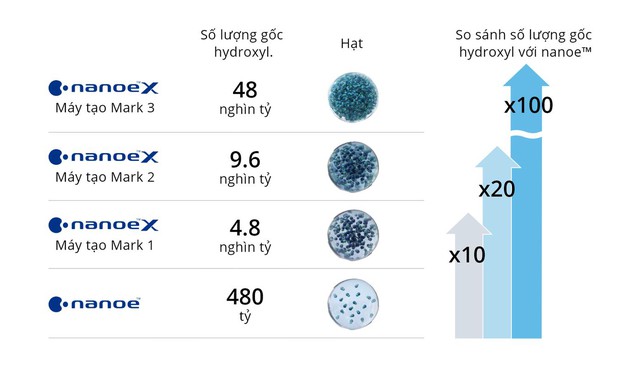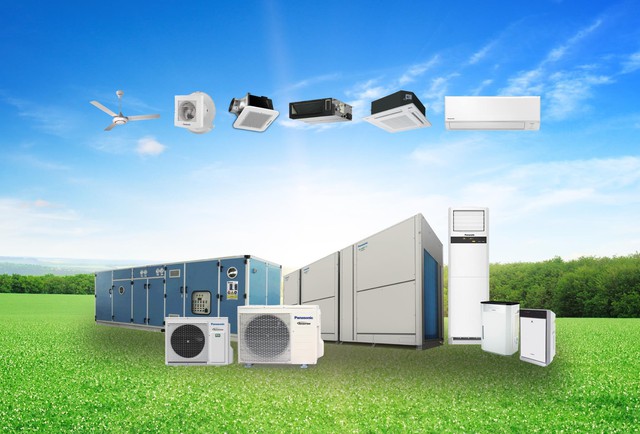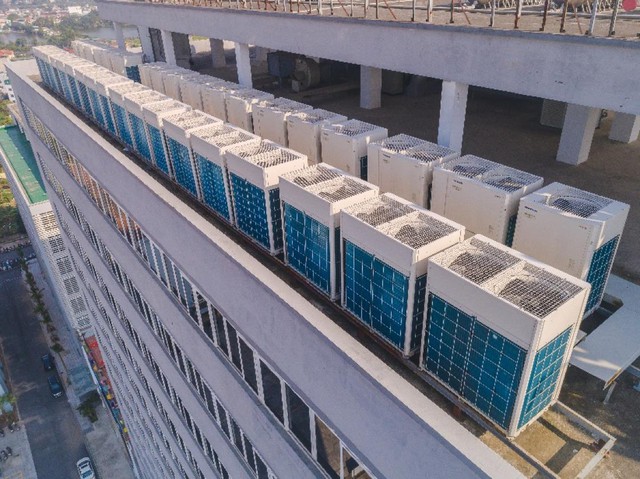The term HVAC stands for Heating Ventilating and Air Conditioning – the system and technology of temperature and humidity control, aiming to bring comfort to users, use energy efficiently, and optimize air quality. By combining knowledge and technology accumulated through over 100 years of research, with HVAC solutions, Panasonic contributes to creating a healthier, more comfortable life for billions of people worldwide.
The “quantum leap” of Panasonic HVAC
Panasonic’s journey of HVAC research and development began in 1913, when the company produced Typhoon – Japan’s first 12-inch AC electric fan. By 1958, Panasonic successfully introduced the first consumer air conditioner under the National brand, quickly embraced by consumers thanks to its compact design, could be placed on windowsills or mounted on walls, and affordable price.
In the 1970s and 1980s, Panasonic expanded its HVAC market to many areas including Japan, Indonesia, and Australia… The company also continued to develop new air conditioner models with advanced features such as Inverter technology, air filtration systems, and Internet connectivity. A notable milestone occurred in 1968 when Panasonic began developing rotary compressors for air conditioning. The efficiency and quality of Panasonic compressors attracted the attention of the global air conditioning industry. In 1971, the company achieved a new breakthrough with the introduction of Thermo-chiller equipment, also for air conditioning purposes. By 1985, Panasonic introduced the world’s first VRF GHP (heat pump) air conditioner, and just 4 years later, the company launched the world’s first simultaneous heating/cooling 3-pipe system (VRF system).
In the 1990s and 2000s, Panasonic pioneered HVAC technology with many breakthrough innovations such as the world’s first compact air conditioner, the first VRF system combined with large-capacity modules in the world, ion and oxygen generators – two of the most important contributions to global air conditioning systems.

The 3rd generation of nanoe™ X technology has 100 times more hydroxyl radicals than traditional nanoe™ (Image source: Panasonic)
In 1997, Panasonic began researching optimal air cleaning solutions. The result was the birth of nanoe™ X technology. After more than 20 years of research, nanoe™ X has developed into the 3rd generation, with the ability to generate 48 trillion hydroxyl radicals per second. This number is 100 times more than the hydroxyl radicals in traditional nanoe™. With the active mechanism of filling the entire room, nanoe™ X molecules can go beyond the filter to deodorize, inhibit viruses and bacteria, prevent pollutants from sticking to surfaces, and in the air. To date, nanoe™ X is Panasonic’s most advanced air purification technology.

Panasonic focuses on developing sustainable and environmentally friendly HVAC solutions. (Source: Panasonic)
In recent years, Panasonic has focused on developing sustainable and environmentally friendly HVAC solutions such as the use of R32 refrigerant with high energy efficiency and low environmental impact. At the same time, the company has developed intelligent HVAC systems that can automatically adjust operations according to user needs, helping to save energy.
In December 2023, Panasonic will operate a Research and Development (R&D) Center in Malaysia, responsible for developing air conditioning equipment for ASEAN and Europe. With this new R&D center, Panasonic expects to continue bringing high-quality, energy-saving, and environmentally friendly air conditioning products to consumers.
Panasonic’s vision of HVAC
With its existing manufacturing and R&D network, Panasonic provides innovative HVAC solutions that integrate advanced technology, maximize efficiency, comply with environmental standards, and improve customers’ lives.
In Vietnam, the company has developed an HVAC development strategy focused on aspects such as energy saving (using Inverter technology and R32 refrigerant), improving air quality (developing Nanoe™ X technology to deodorize, kill bacteria and viruses in the air), enhancing convenience (developing smart HVAC systems that can be remotely controlled via smartphones), and researching and developing HVAC products that meet the needs of business partners and Vietnam’s climate conditions. At the same time, Panasonic Group is striving to implement the Panasonic GREEN IMPACT (PGI) commitment to realize a better life and a sustainable global environment, with a goal of reducing over 300 million tons of CO2 emissions worldwide by 2050. Through this strategy, the company expects to join hands with Vietnam in implementing the government’s policy of achieving net-zero emissions by 2050.

Panasonic has become the leading professional HVAC solution provider in Vietnam.
With a 100-year history in the HVAC field with many remarkable achievements, Panasonic demonstrates its position as a professional HVAC solution provider in the international market in general and Vietnam in particular. The company is also a reputable and reliable partner of many entities, all construction projects in Vietnam. With the goal of contributing to sustainable social development and prosperity, Panasonic continuously brings high-quality products, expected to lead the Vietnamese HVAC market in the coming years.
(*) Verified under test conditions of universities and research institutes.
Learn more here









































